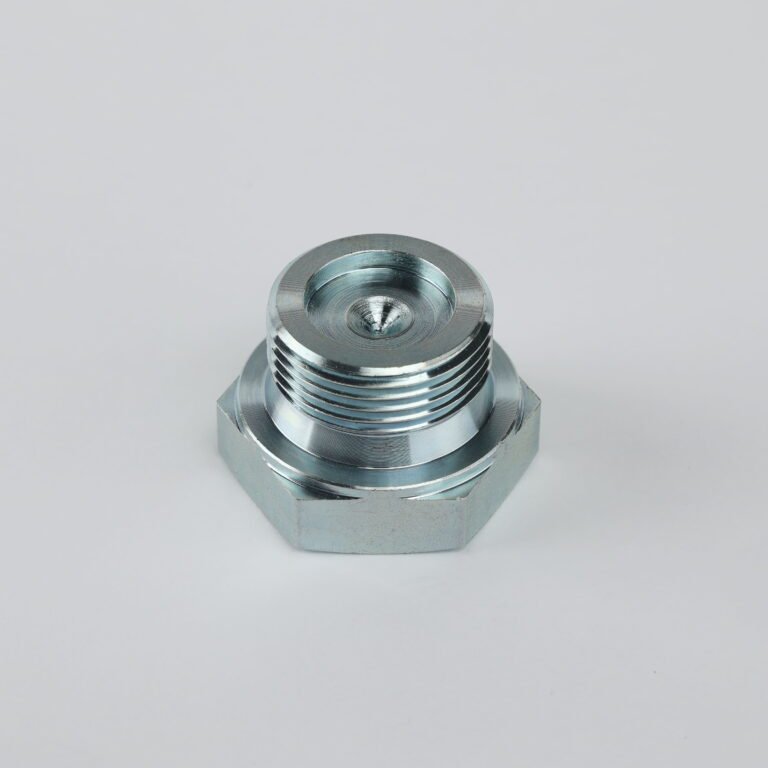In industrial manufacturing, corrosion protection plays a critical role in extending the lifespan of products and ensuring the stable operation of equipment. Galvanization and zinc coating are among the most common anti-corrosion methods, widely used in industries such as steel, construction, machinery, and home appliances. While both processes involve the use of zinc as the primary material for corrosion protection, they differ in terms of technique, performance, and applicable scenarios. This article will provide an in-depth introduction to the role, advantages, and disadvantages of ordinary galvanization and zinc coating, helping readers understand their differences and suitability.
Ⅰ. Basic Concepts of Galvanization and Zinc Coating
1.1 Galvanization
Galvanization is a process in which a layer of zinc is applied to the surface of a metal substrate through methods such as electroplating, hot-dipping, or mechanical plating. The zinc layer effectively protects the metal from oxidation, corrosion, and environmental factors. Common galvanization methods include hot-dip galvanization, electro-galvanization, and spray galvanization.
- Hot-Dip Galvanization: Steel is dipped into a bath of molten zinc, forming an alloy layer that adheres strongly to the steel, providing excellent corrosion resistance.
- Electro-Galvanization: Zinc ions are deposited on the metal surface through an electrolytic process. The coating is thin, smooth, and uniform, suitable for precise components.
- Spray Galvanization: Zinc is sprayed onto the metal surface, commonly used for large structural components or parts that cannot be immersed in a galvanizing bath.
1.2 Zinc Coating
Zinc coating refers to the application of a layer of zinc to a metal surface in the form of zinc sheets, which are typically fixed to the substrate using methods such as hot pressing, cold pressing, or adhesives. Unlike galvanization, zinc coating often involves the application of solid zinc sheets to form a physical barrier over the surface.
Zinc coatings are often used for large equipment or complex components that are difficult to galvanize. Their primary applications include the automotive, marine, railway, and construction industries.
Ⅱ. The Role of Galvanization
The main role of galvanization is to protect metal substrates from oxidation and corrosion. The zinc layer acts as a sacrificial anode, preventing the underlying metal from corroding by corroding itself instead. Specific functions of galvanization include:
- Corrosion Protection: The galvanized layer effectively isolates the base metal from contact with the air and water, preventing oxidation and rust, particularly in humid or acidic environments.
- Extended Service Life: By preventing oxidation, galvanization significantly extends the lifespan of steel components, especially in outdoor, marine, or chemically aggressive environments.
- Improved Wear Resistance: Some galvanizing processes (e.g., hot-dip galvanization) enhance the hardness and wear resistance of materials, making them more suitable for mechanical applications.
- Aesthetic Appeal: Galvanized metals, especially those treated with electroplating, have a smooth, shiny surface, making them more aesthetically pleasing for use in consumer products such as home appliances and furniture.
Ⅲ. The Role of Zinc Coating
Zinc coating also provides corrosion protection, but its application method and performance differ from galvanization. The main functions of zinc coating are as follows:
- Physical Protection: Zinc coating creates a physical barrier on the surface of the metal, preventing direct contact between the base metal and corrosive elements.
- High-Temperature Resistance: Zinc coatings generally offer better performance in high-temperature environments, making them suitable for applications that require protection in elevated temperature conditions.
- Ease of Application: Unlike galvanization, zinc coating can be applied to complex parts that are difficult to galvanize, and it can be done on-site or in the factory, offering greater flexibility.
- Mechanical Performance: Zinc coatings enhance the impact resistance and bending strength of products, protecting the base metal from damage when subjected to mechanical shocks or stresses.
Ⅳ. Advantages and Disadvantages of Galvanization
4.1 Advantages
- Superior Corrosion Resistance: Galvanized coatings effectively prevent rust and corrosion by forming a protective barrier between the base metal and the environment, especially in moist or harsh conditions.
- Strong Adhesion: Hot-dip galvanization creates an alloy layer that adheres firmly to the base metal, offering long-lasting protection that is difficult to peel off.
- Wide Applicability: Galvanization is suitable for a wide range of metal shapes and sizes, making it ideal for various industrial applications, including construction, automotive, and manufacturing.
- Cost-Effective: Compared to other anti-corrosion methods, galvanization is relatively inexpensive, especially for large-scale production, providing an efficient and economical solution.
4.2 Disadvantages
- Appearance Issues: The surface of hot-dip galvanized materials tends to be rough, which may not meet the aesthetic requirements of some applications, particularly in consumer products where appearance is important.
- Inconsistent Coating Thickness: Electro-galvanization can result in uneven coating thickness, which may impact corrosion protection and reduce its effectiveness in certain environments.
- Limited High-Temperature Performance: Although galvanized coatings offer some heat resistance, they are not ideal for extreme high-temperature environments, as zinc can oxidize at elevated temperatures, reducing the protective effect.
- Complexity in Processing: Small or intricate parts may have areas that are difficult to galvanize effectively, leading to gaps in protection and reduced performance.
Ⅴ. Advantages and Disadvantages of Zinc Coating
5.1 Advantages
- Excellent High-Temperature Performance: Zinc coatings perform better in high-temperature environments compared to galvanization, offering superior protection in industries where heat is a concern.
- Greater Application Flexibility: Zinc coatings are ideal for complex, irregularly shaped components that are difficult to galvanize, allowing for more diverse industrial applications.
- Repairability: If the zinc coating is damaged, it can be easily repaired locally without needing to reapply the entire coating, unlike galvanization.
- Enhanced Mechanical Protection: Zinc coatings provide additional mechanical strength, making the material more resistant to impact and physical damage.
5.2 Disadvantages
- Higher Cost: Zinc coatings are generally more expensive compared to traditional galvanization, particularly when considering the additional costs of application and processing.
- Not Suitable for Large-Scale Production: Zinc coating typically requires more specialized processes, which may not be as suitable for high-volume, fast-paced industrial production.
- Less Stable Coating: In some cases, zinc coatings may have reduced adhesion or stability, especially when exposed to harsh conditions, leading to peeling or degradation over time.
- Lower Long-Term Corrosion Resistance: While zinc coatings offer good initial protection, they tend to have a lower resistance to long-term corrosion compared to galvanization, especially in aggressive environments.
Ⅵ. Conclusion
Both ordinary galvanization and zinc coating offer distinct advantages and are suitable for different applications. Galvanization is highly effective in providing corrosion resistance, is cost-efficient, and has a wide range of applications in large-scale industrial production. However, it may not be ideal for components requiring a high-quality finish or those exposed to extremely high temperatures.
On the other hand, zinc coating provides superior high-temperature protection, is more flexible in terms of application, and offers additional mechanical benefits. However, it is more expensive and may not be the best option for mass production.
When selecting between galvanization and zinc coating, companies must consider the specific needs of their project, such as the environmental conditions, performance requirements, and budget, in order to make the most suitable choice.


